Buttermilk cornbread is rich, moist, tangy, gritty, and delicious. It is perfect beside a bowl of chili, toasted with butter, or topped with cheese.
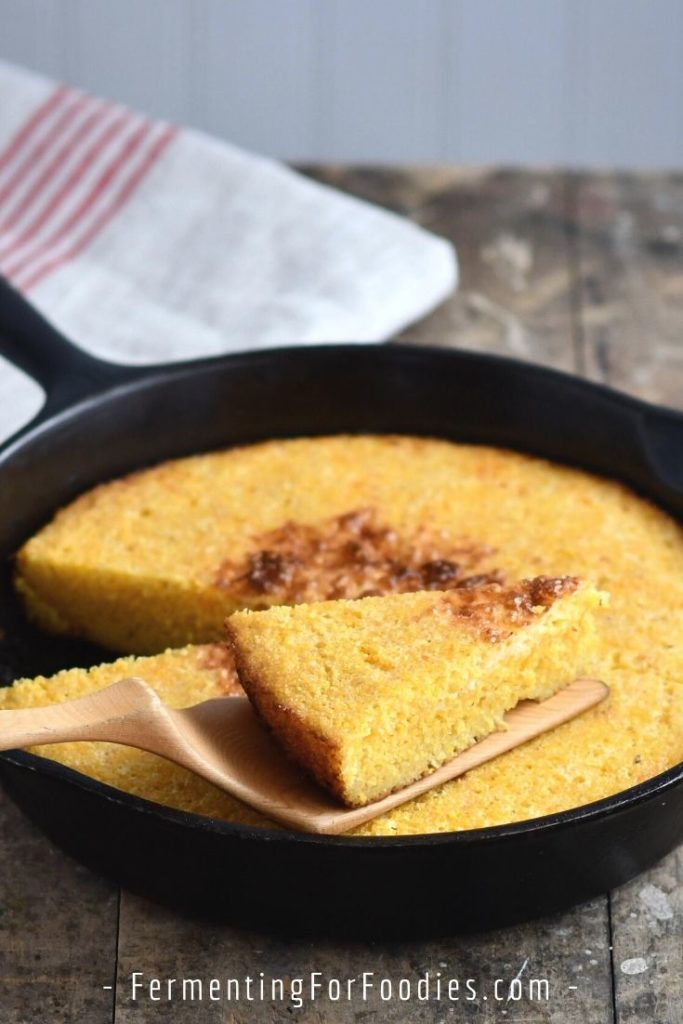
This traditional buttermilk cornbread recipe is perfect for all sorts of different options. Try making cornbread muffins, or mixing in the fixings. Or let the corn soak and ferment to improve digestibility and nutritional value!
Cornbread Muffins with Fixings
I’m always on the hunt for a lunchtime snack that is filling and sugar-free. Cornbread is a great solution, except for one problem, day-old cornbread is rather dry.
This is why I always add some fixings in every batch. The added flavor helps to keep the cornbread from going stale.
Here are a few of my favorite cornbread fixings. All of them are delicious on their own, however, they can be mixed and matched for your own amazing cornbread combination.
- Mix in up to 1/2 cup of grated cheese.
- Finely dice 2 Tbsp of sun-dried tomato.
- Add a 1/4 cup of diced spring onion.
- Finely dice 1 Tbsp of chipotle peppers or pickled jalapeno peppers. Or if you like it really hot, add up to 1/4 cup for an extra fiery cornbread.
- Make a really corn-y cornbread by adding a 1/4 cup of fresh sweet corn kernels.
- Add 1/4 cup of bacon bits or cracklings. Fry the bacon or crackling in a cast-iron skillet then use it to bake the cornbread. The extra fat is delicious.
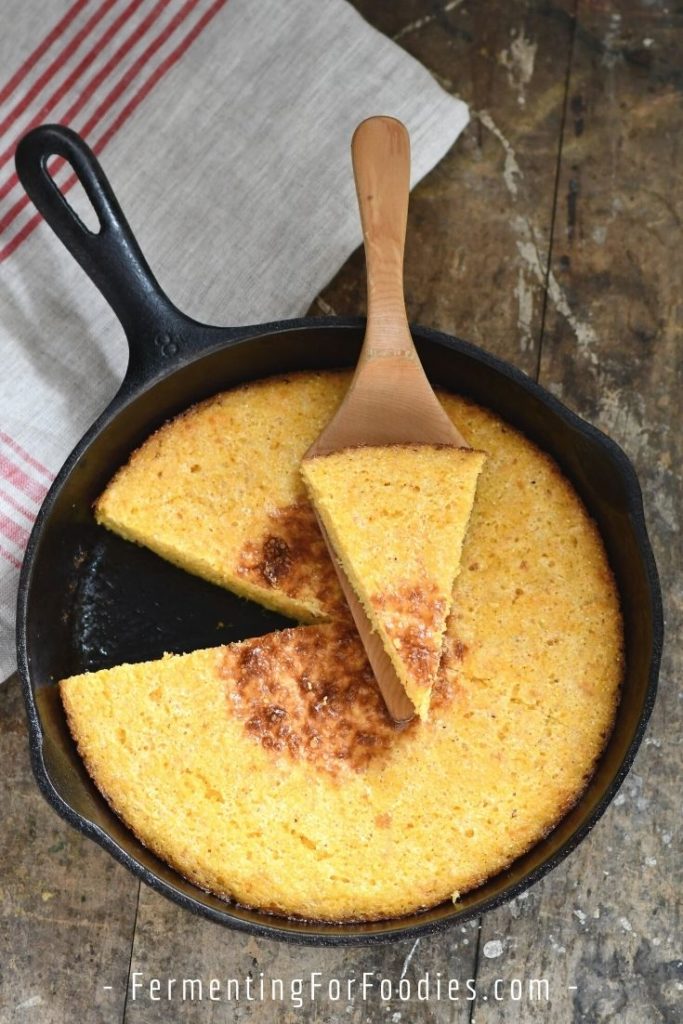
Why Ferment Cornmeal?
Corn ferments really well. It is ideal for soaked and fermented baking as it won’t get thick and sticky like other soaked grains.
Here are some of the benefits of soaking and fermenting the cornmeal in this recipe:
- Fermentation adds a delicious sourdough-like flavor to the cornbread.
- The fully hydrated cornmeal has a smoother texture.
- Corn is hard to digest. Pre-fermenting for a least 8 hours, and up to 24 hours improves the digestibility of the corn.
- Fermented cornbread can be made without any additional flour so it is a naturally gluten-free recipe.
Here’s a picture of fermented cornmeal. All of the buttermilk has been absorbed and you can see air pockets from the fermentation.
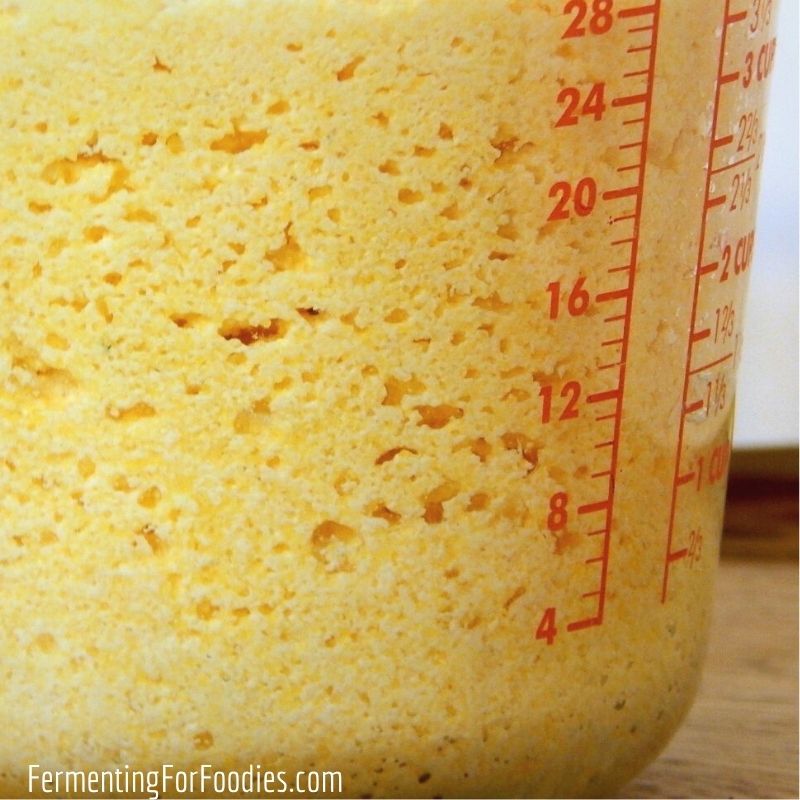
Buttermilk Cornbread
Cornbread is rich, moist, tangy, gritty, and delicious. It is great beside a bowl of chili, topped with cheese, or served up for breakfast. This recipe can also be used to make cornbread muffins. See the section above for adding flavorful fixings!
- Prep Time: 10 minutes
- Cook Time: 20 minutes
- Total Time: 30 minutes
- Yield: Serves 8
- Category: Bread
- Method: Fermented
- Cuisine: Southern
- Diet: Gluten Free
Ingredients
- 1 3/4 cup cornmeal
- 2 cups buttermilk (see notes other for options)
- 1 tsp baking powder
- 1 tsp baking soda
- 1 tsp salt
- 2 eggs
- 1 Tbsp oil (to grease your pan)
- Added fixings (see section above for some options)
Instructions
- Mix the cornmeal and buttermilk in a glass bowl or measuring cup. Allow it to soak for at least 30 minutes or up to 24 hours. The longer it soaks the better the flavor and texture of the cornbread. See the section above for more information on fermenting cornmeal.
- When you’re ready to bake, preheat the oven to 450 F.
- Stir the baking powder, baking soda, salt into the cornbread batter. Then beat in the eggs.
- Oil a 4 cup baking dish. Pour batter into the baking dish. Bake for 20-25 minutes. It’s ready when the cornbread is cooked through and starting to brown.
Notes
- Though buttermilk is traditional in cornbread, feel free to substitute it with milk kefir or yogurt.
- I bake my cornbread in a traditional 10-inch cast-iron skillet
, but you could also use a glass baking dish
or a muffin tin
. Just reduce the baking time to 15 minutes if you’re making cornbread muffins.
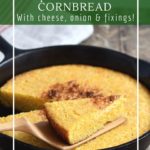
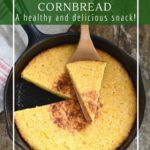
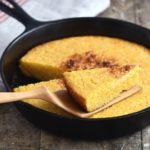
Great recipe, love it, will definitely try this at home. Thanks for posting.
This recipe looks so good and simple! I wonder what this tastes like. I can’t wait to try this tomorrow. Thanks a lot for sharing this recipe!
I used corn flour and it never did ferment……wasted almost four cups flour and four cups of buttermilk !
Corn flour is fairly different from cornmeal. Sorry that it didn’t work out! Maybe there’s something else you can do with it? Make corn tortillas? Won’t be typical, but you could just replace the water with buttermilk, just so you won’t have to waste the ingredients.
Hi, I’m from South Africa and I’m not sure what cornmeal is. Is it not as fine as corn flour? Like polenta?
Cornmeal and polenta (uncooked) are roughly the same things. It’s just about how coarsely they are ground. However, you can use polenta in this recipe too. Enjoy!
I made this cornbread this morning, and I had let it ferment over 12+ hours. It reminded me of southern spoon bread somewhat in its texture and it is absolutely delicious. The only things I changed was to add A Tbs of grape seed oil to the batter and to use butter to oil the caste iron skillet. I have copied other recipes from your site to try, and since I make Kefir, buttermilk, and Mesophilic yogurt, I always have ample probiotics to use.
Thank you for this site.
Appreciate it,
Linda
Thanks!
Hi! I was wondering what your thoughts are on fat content of buttermilk. I have buttermilk on hand right now that is made from cultured whole milk. I don’t think that is what buttermilk technically is, but it is labeled the same. In any case, do you think that will work for these recipes? Would you strongly recommend traditional buttermilk instead? I try to incorporate quite a bit of fat into my diet as it helps me keep my blood sugar more consistent, but please let me know what you think. Thanks!
Hi, I wrote this recipe for cultured buttermilk, so your whole milk buttermilk is perfect. Traditional buttermilk (from making butter) is really low-fat, but most buttermilk these days is cultured milk. It can be skim or whole milk. I would recommend higher fat buttermilk for flavour. However, use what works best for you! Enjoy!
Thank you, Emillie, for a delicious recipe! I have been wanting to start soaking my flours for baked goods, and when I found a beautiful bottle of buttermilk at the local farm on the same day I wanted to make cornbread for supper, I also found your recipe and set about to soak. I bake very rarely, and cornbread is one of the few treats that gets made regularly. We have two recipes–one sweeter than the other–depending on the main meal so I was concerned that the lack of sugar would be a problem. I did not need to be concerned. The flavor and crumb of this cornbread were wonderful! And leftovers needed just a shmear of lemon curd to be transformed! Thanks for giving me the boost I needed to try, and now trust, the process of soaking flour/cornmeal. I’m hooked!
Lemon curd on cornbread sounds delicious. Thanks for sharing!
Do you leave this cornmeal/buttermilk mixture out on the counter for a full day? And, if so, I’m assuming it was loosely covered, correct? I’m quite new to fermentation and wondered what the “safety” factor of leaving this mixture out of refrigeration is.
Hi David, I understand your concerns around food safety. Buttermilk is a culture that ferments best between 20C and 30C, so it’s perfectly safe to leave it out on the counter with the cornmeal. Cornmeal actually becomes more nutritious when soaked and fermented in this manner. I wrote a whole post on it here: https://www.fermentingforfoodies.com/fermented-cornmeal/ Probably the trickiest part of this recipe is finding buttermilk with a good, strong culture. If you are using store-bought buttermilk and aren’t sure of the culture, try using it to make more buttermilk first. https://www.fermentingforfoodies.com/homemade-fermented-buttermilk/ Good luck!
This is the best gluten free cornbread I’ve ever made – and it’s no waste for whey too so a double benefit. I used the whey from homemade ricotta cheese and it is so buttery tasting. I do slather it with honey if I’m feeling like dessert but it’s great just out of the oven for breakfast and with soup for dinner. I’m so happy to have found your gluten free and no waste recipe – thank you!!
Thanks for sharing! It means so much to me to hear when someone has enjoyed one of my recipes. Cheers!
Hi there,
Is there anything that I could add to this recipe to ensure that the cornbread is very moist? I haven’t tried making this yet, but I don’t like dry cornbread so I’d like to avoid that if possible. Thanks!
Fat is definitely the best way to keep cornbread moist. So add in bacon or cheese. Also, I find it’s quite moist when fresh, so eat it quickly!
Cheers, Emillie